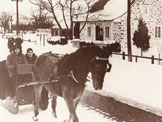-
Grant of the Mille-Îles Seigneury
September 24, 1683

King Louis XIV, portrait by Hyacinthe Rigaud (1701).
On September 24, 1683, Michel-Sidrac Dugué de Boisbriand was granted the seigneury (manorial fief) of Mille-Îles (a thousand islands), a territory lying between Terrebonne and the Rivière du Chêne. A soldier by profession, Sieur de Boisbriand had come to New France as a captain in the prestigious Carignan-Salières Regiment, sent by King Louis XIV to pacify New France.
-
Second grant of the Mille-Îles seigneury des Mille-Îles
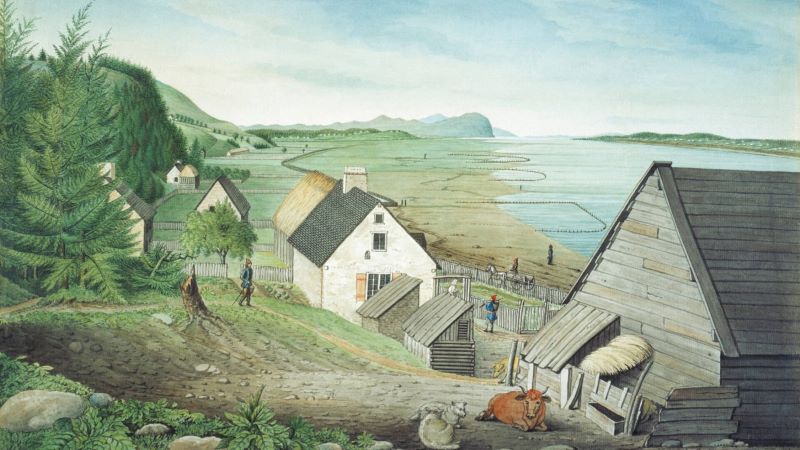
View of Château-Richer, from Cap Tourmente and the eastern tip of Île d’Orléans, near Quebec City, by Thomas Davies (1787). Although not from the Deux-Montagnes region, this image gives a rough idea of what New France might have looked like in the 18th century. National Gallery of Canada.
As it had not been cleared and settled, the Mille-Îles fief reverted briefly to the Royal Domain before being immediately granted anew to Jean Petit and Charles-Gaspard Piot de Langloiserie. This second grant was augmented at that time to include the territory of the present-day cities of Sainte-Marthe-sur-le-Lac and Deux-Montagnes, in addition to the territory between Terrebonne and rivière du Chêne.
-
Division of the Mille-Îles seigneury
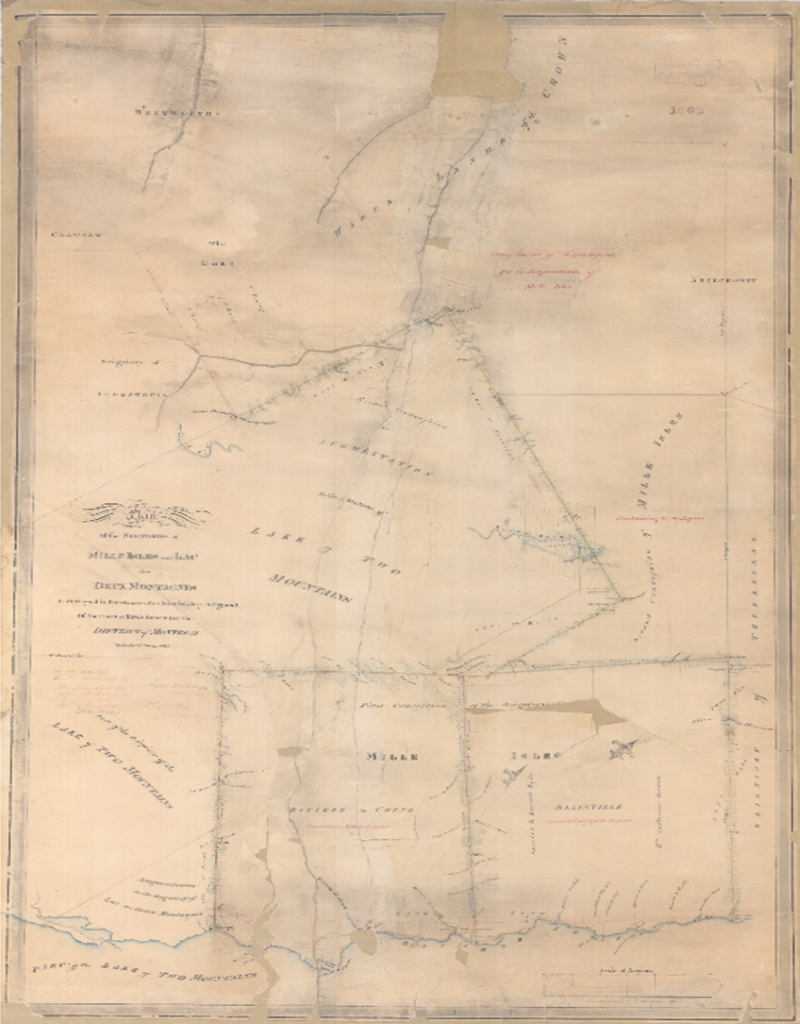
This map from 1831 shows the division of the Mille-Îles seigneury. Ministry of Lands and Forests: “Plan of the seigneuries of Mille-Îles, Lac-Des-Deux-Montagnes, Rivière-du-Chêne and Blainville,” by Joseph Bouchette fils (June 20, 1832). Bibliothèque et archives nationales du Québec E21,S555,SS1,SSS24, P14/Fonds
Jean Petit and Thérèse du Gué, widow of Gaspard Piot de Langloiserie, jointly administered the seigneury, which they subsequently divided into two separate holdings. Petit retained possession of the western half, which today largely corresponds to the cities of Saint-Eustache, Deux-Montagnes, and Sainte-Marthe-sur-le-Lac. From then on, the two tracts of the Mille-Îles seigneury would develop independently.
-
Seigneur Louis-Eustache Lambert Dumont
Louis-Eustache Lambert-Dumont became seigneur in 1733 through his marriage to Charlotte Louise, daughter of Jean Petit. His seigneury would be known under the name of Rivière du Chêne (or Dumont). From then on, the region became intimately linked to the Lambert-Dumont family, who held the seigneury for many years.
-
First concessions by Eustache Lambert-Dumont
April, 1739
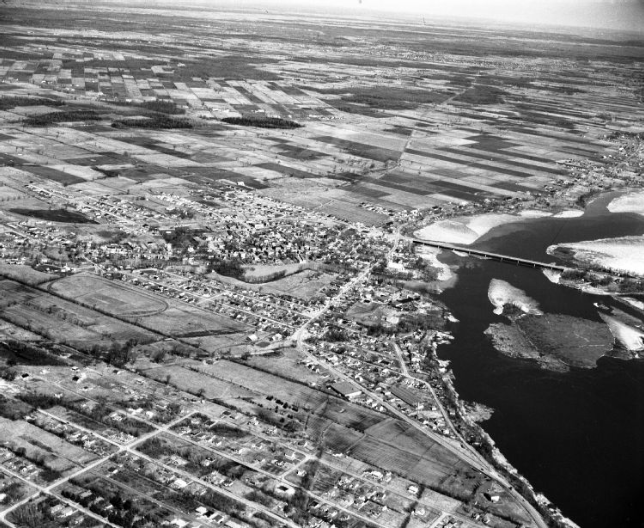
Development of the region began in earnest with the land concessions of the mid-18th century. Seen here is a partial view of Saint-Eustache and Saint-Eustache-sur-le-Lac in 1958.
“Vues de la Ville de Saint-Eustache”
Bibliothèque et archives nationales du Québec P97,S1,D6423-6433
As lord of the manor, Lambert-Dumont made his first land concessions to tenants in April 1739, the effective start of colonization in the seigneury. These lands were located along what would become known as the Grande-Côte.
-
First settlements west of the seigneury
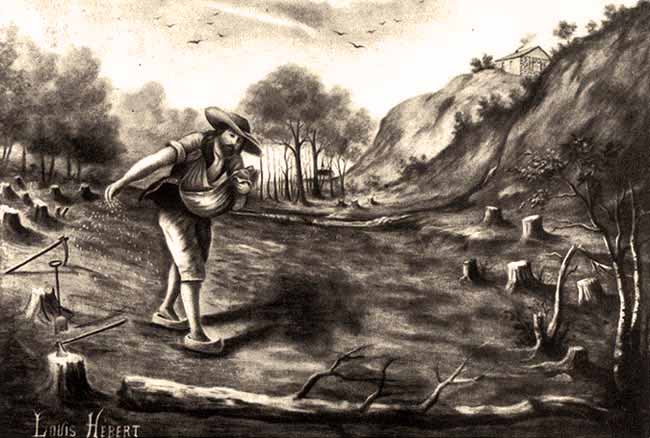
“Louis Hébert clearing his land for farming”. Library and Archives of Canada C-016952
In 1741, Lambert-Dumont began making land concessions west of a boundary line that corresponds today to Rue Féré.
-
Construction of the Grand Moulin
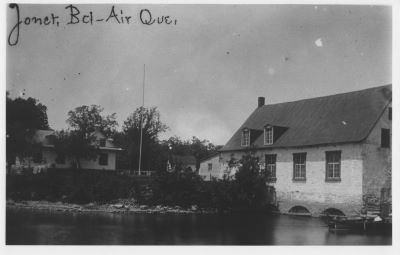
“The flour mill” (circa 1912) Hélène Lamarre Archive – Courtesy of the Société de généalogie et d’histoire de Saint-Eustache.
The first mill on the Grand Moulin site was built some time before 1790. A second mill was added to the earlier around 1800, followed by a carding mill and fulling mill around 1820.
-
Battle of Saint-Eustache
December 14, 1837
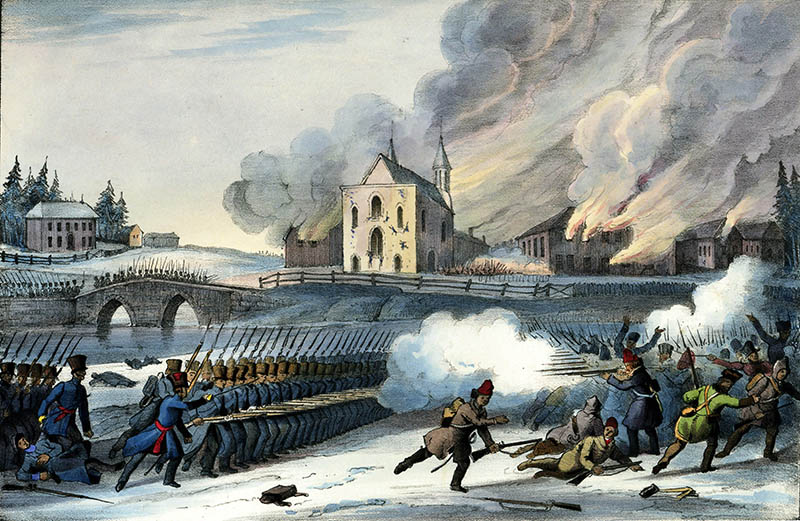
“Back View of the Church of Saint-Eustache and Dispersion of the Insurgents.” Ink and watercolour on paper, by Lord Charles Beauclerk (1840).
On December 14, 1837, British troops and Patriote rebels clashed at Saint-Eustache. Although the battle was fought in the middle of Saint-Eustache Village, its impact was felt throughout the Deux-Montagnes county and region.
-
Establishment of Saint-Eustache Village
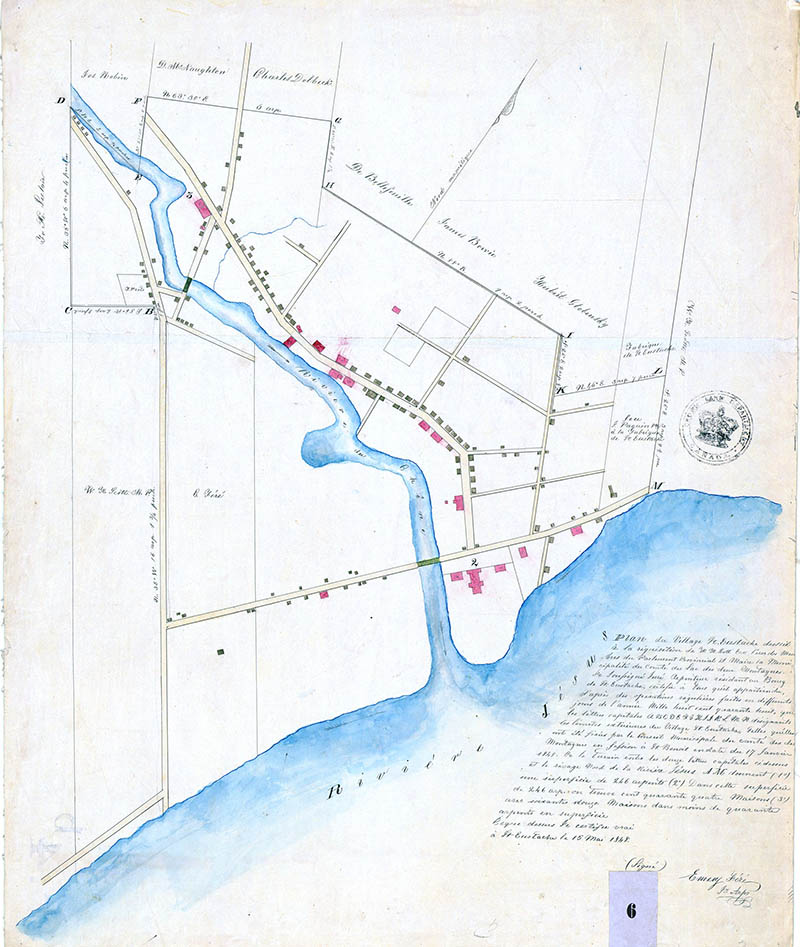
Map of Saint-Eustache Village (circa 1848). Plan du village de Saint-Eustache, Bibliothèque et archives nationales du Québec, E21, S555,SS1, SSSS23, PE.4B
Saint-Eustache Village was established as a separate administrative entity.
-
Abolition of the seigneurial system
In the aftermath of the 1837 Rebellion, the Act for the Abolition of Feudal Rights and Duties in Lower Canada formally ended the seigneurial system. In fact, however, some features of the old manorial system continued for decades to come.
-
Establishment of the Saint-Eustache parish municipality
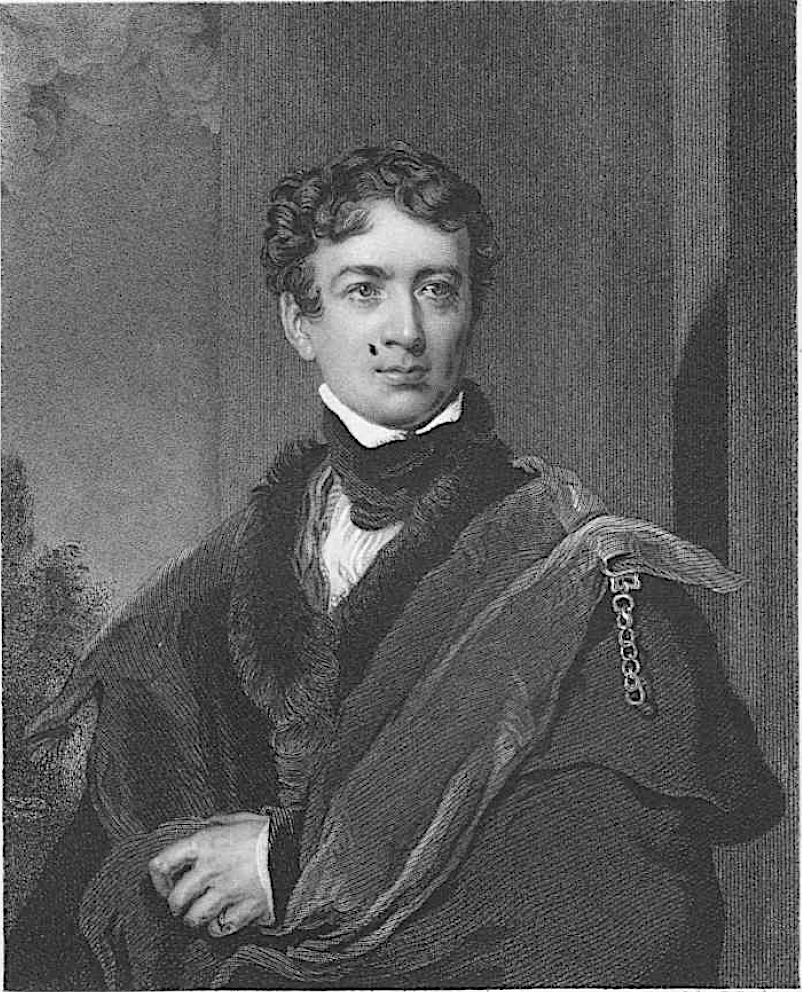
In his report on the crisis that had shaken Upper and Lower Canada, Lord Durham deplored the total absence of local authorities in the parishes and townships. These observations led ultimately to the creation of municipal councils (engraving, 19th century). “Mechanical Curator” collection (British Library)
In a move to introduce decentralized powers (after several unsuccessful attempts at a settlement), the Lower Canada Municipal and Road Act was adopted in 1855. This legislation, which granted political autonomy to newly created local and county councils, formed the basis of the municipal system we still have today. The territory that would become the City of Deux-Montagnes was incorporated into the Saint-Eustache parish municipality.
-
Establishment of Bel-Air Village
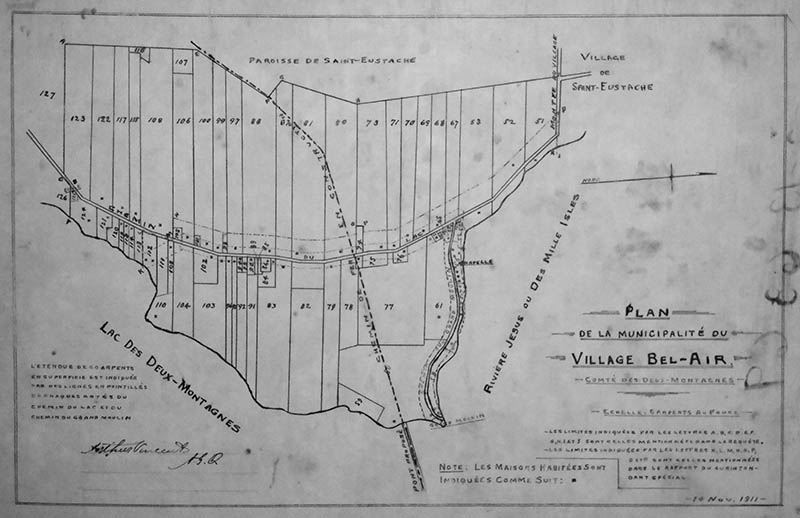
This 1911 map of Bel-Air Village shows that its municipal boundaries were quite similar to those of Deux-Montagnes. Carte du village de Bel-Air, Bibliothèque et archives nationales du Québec, CA601,S171,SS1,SSS2,D3-14-85
On February 10, 1912, a village nucleus near the Grand Moulin broke away from the Saint-Eustache parish municipality and became the municipality of Bel-Air Village. Jean Baptiste Berthiaume, owner of the Grand Moulin, was mayor of this short-lived village, whose territory would return to the Saint-Eustache parish municipality a few months later.
-
Disaster at the Grand Moulin
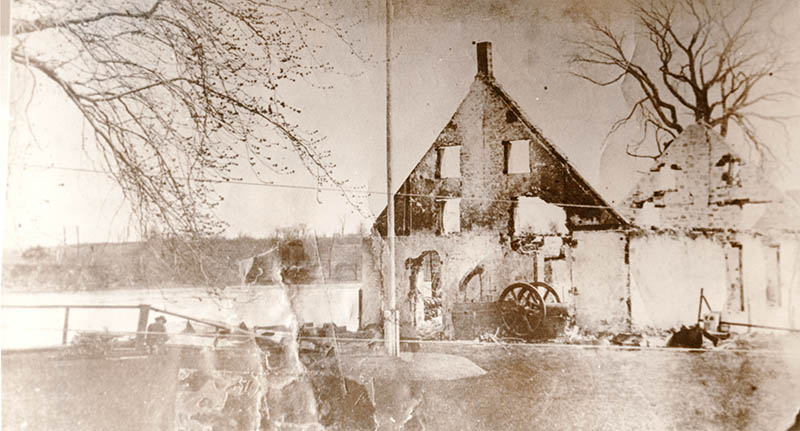
This photo shows the near-total destruction of the mill. The fire put an end to the hydrogen manufacturing business, which used engineering components imported from Germany before the First World War.
City of Deux-Montagnes Archives (Germain Beauchamps Collection)
Not long after its conversion into a hydrogen manufacturing plant, the Grand Moulin went up in flames. On May 1, 1917, a careless employee lit a candle to inspect a gas line, sparking an explosion and inferno that consumed the entire structure. Amazingly, the employee survived, though with severe burns to his hands.
-
The train connection
October 21, 1918
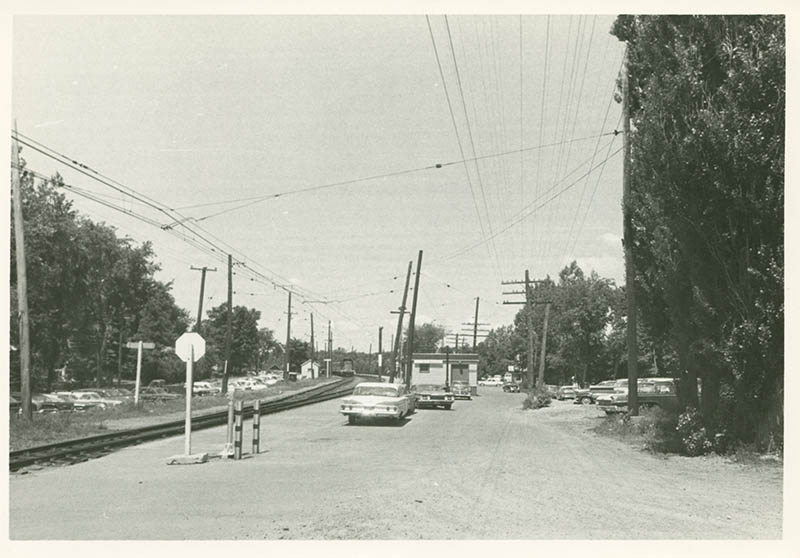
A view from the train station (circa 1965). City of Deux-Montagnes Archives
On October 21, 1918, the first commuter train rolled into the Deux-Montagnes region. The new railway line carried residents through the Mount Royal tunnel all the way to downtown Montreal. It was the beginning of real growth for the village, which would continue in the years to come.
-
The Village of Saint-Eustache-sur-le-lac begins a new chapter
August 18, 1921
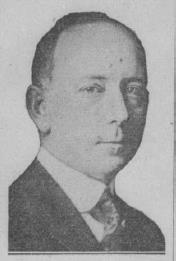
Only one photograph of Joseph-Arthur Caron is known to survive. Though now an obscure figure in our local history, he was a successful industrialist and a member of one of Montreal’s most influential families. “Joseph-Arthur Caron” by Raphaël Ouimet, Biographies Canadiennes-Françaises (Montreal, 1923), p. 288.
On August 18, 1921, the village municipality of Saint-Eustache-sur-le-Lac was formally established on territory released in the break-up of the Saint-Eustache parish municipality. Joseph-Arthur Caron became the village’s first mayor.
-
Snapshot of Saint-Eustache-sur-le-lac
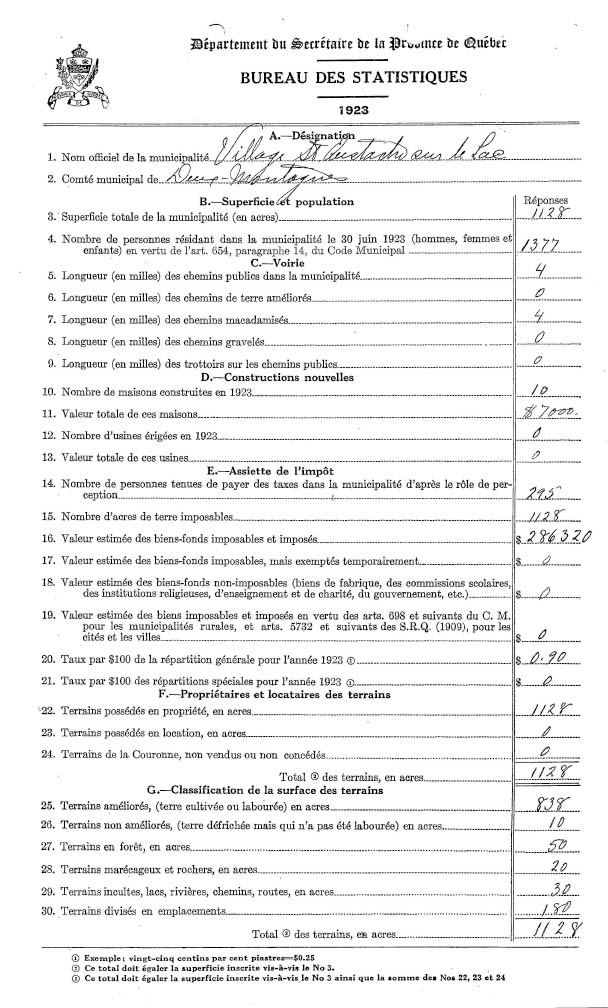
After two years, a statistical profile of the village of Saint-Eustache-sur-le-Lac reads as follows: 1,377 inhabitants on 4 miles (6.4 km) of macadam public roads. Ten new houses were built in that year. Today, by comparison, Deux-Montagnes has nearly 80 km of roads and a population of 18,822.
1923 Report – PDF version
-
New City Hall
June 6, 1931
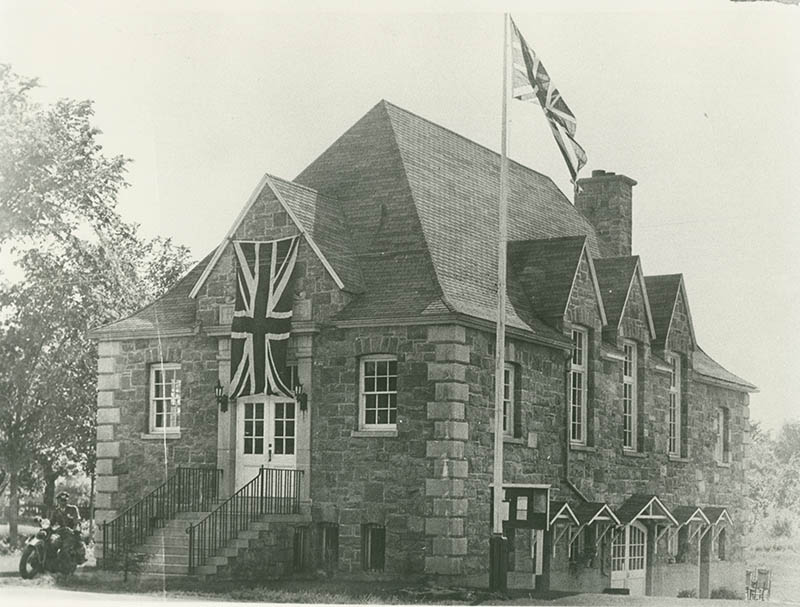
The Canadian Red Ensign is prominently displayed in this photo, which was probably taken at the opening of the new City Hall in 1931. Before the adoption of the Maple Leaf flag in 1965, it was usual to fly the Red Ensign as the national flag of Canada.
Hélène Lamarre Archive – Courtesy of the Société de généalogie et d’histoire de Saint-Eustache.
On June 6, 1931, the city council held its first meeting in the new City Hall, then still under construction. The handsome gabled edifice, built at a cost of some $15,000, was not completed and officially opened until the following year.
-
St-Eustache Golf & Country Club
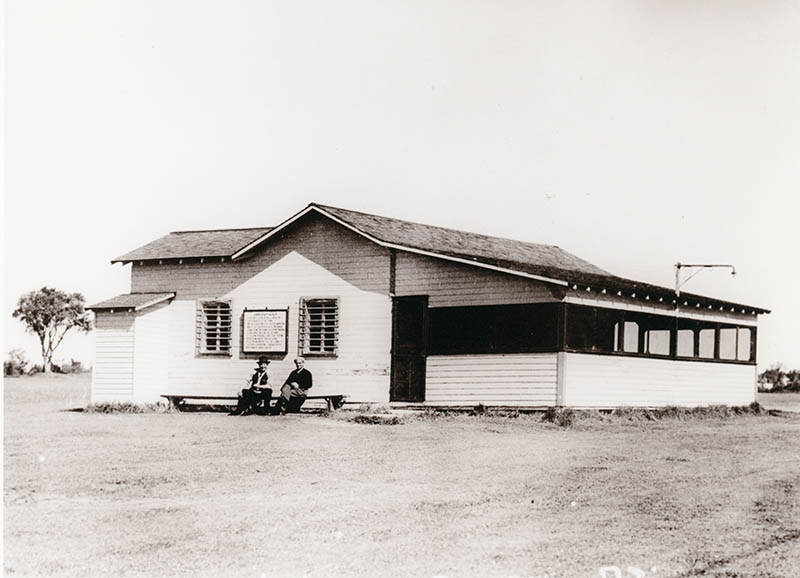
Germain Beauchamps Collection. City of Deux-Montagnes Archives.
In the summer of 1933, Saint-Eustache-sur-le-Lac opened a 9-hole golf course. The St-Eustache Golf & Country Club, was a going concern until the 1970s.
Very few pictures of the St-Eustache Golf & Country Club have survived. This photo shows the first clubhouse on the golf course. The building was later expanded and became the Deux-Montagnes Community Centre and Library in the late 1970s.
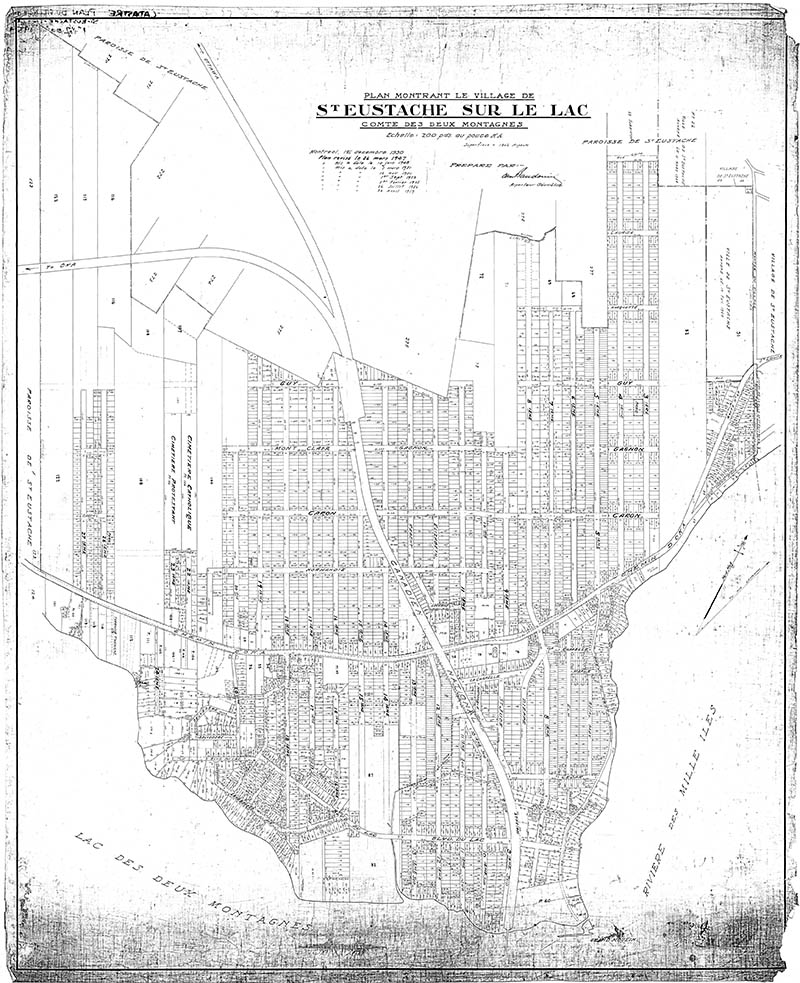
Map of Saint-Eustache-sur-le-Lac dated 1930 (revised in 1959). The “St-Eustache Golf & Country” was located on lot # 52. Archives of the City of Deux-Montagnes
-
La Petite école Jaune opens its doors
September, 1939
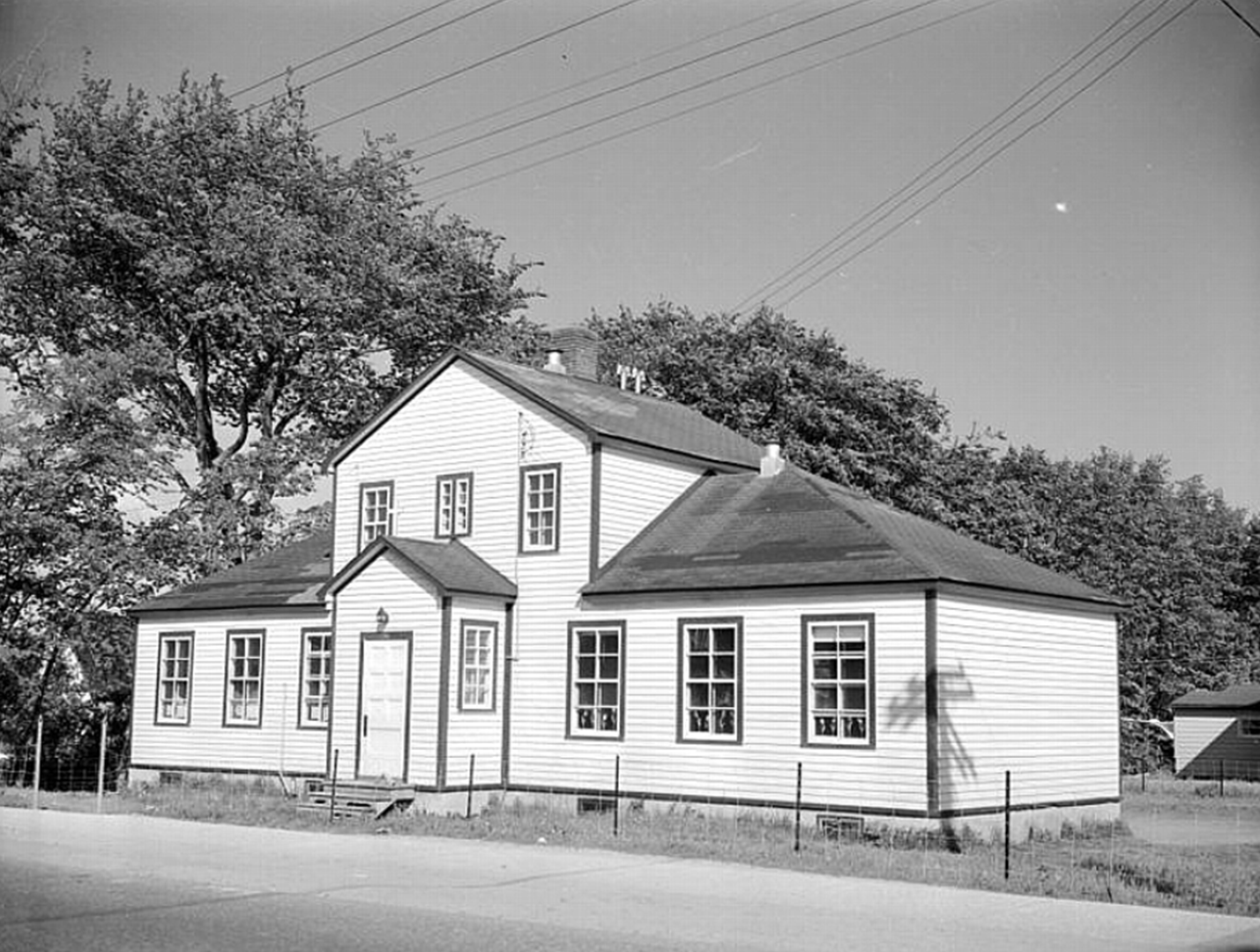
The Petite École Jaune in the early 1940s. Hélène Lamarre Archive
Courtesy of the Société de généalogie et d’histoire de Saint-Eustache
The fast-growing Saint-Eustache-sur-le-Lac Village soon needed a school. A modest building, designated “Rural School Number 4,” opened for classes in September 1939. Its characteristic painted siding soon earned it the nickname among local residents of la petite école jaune – “the little yellow schoolhouse.”
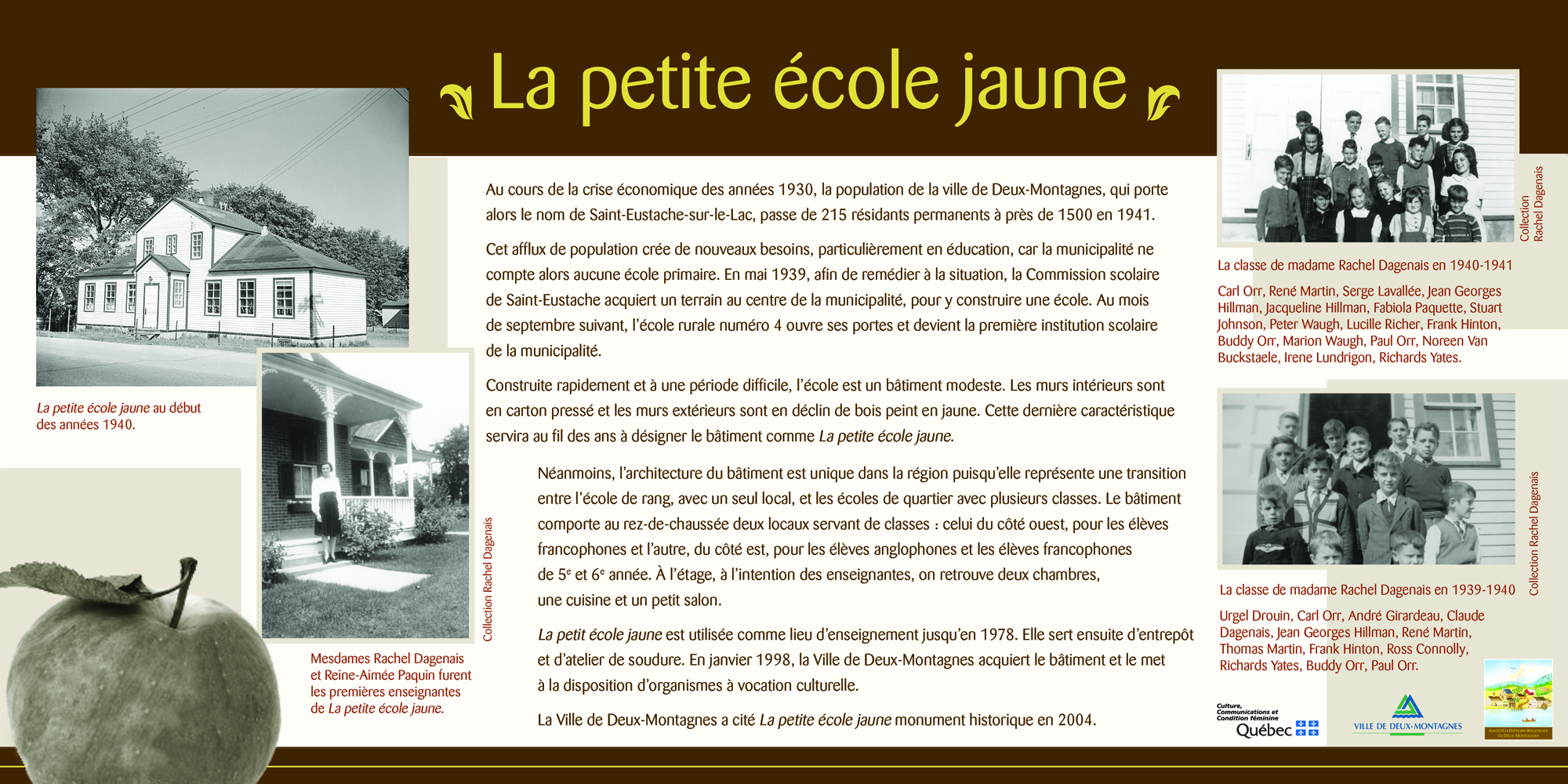
-
The first public library
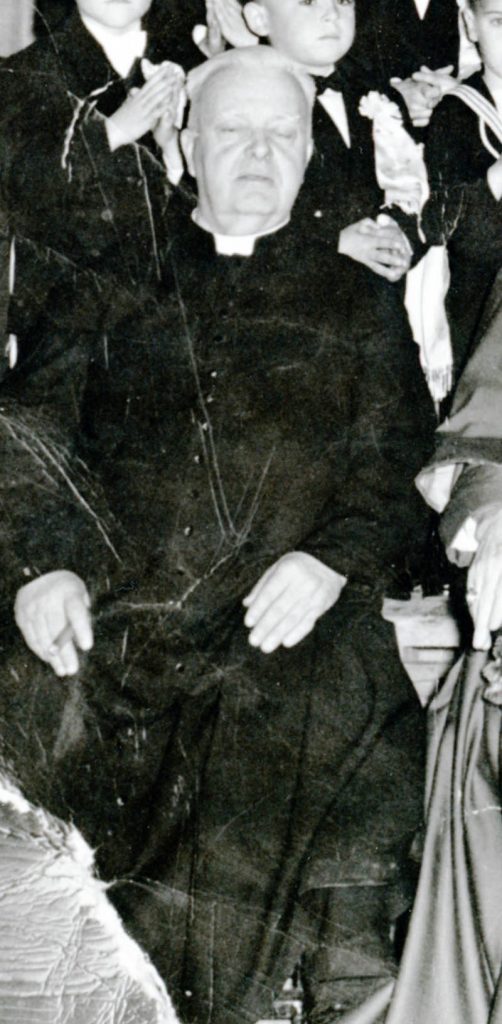
Father Jean-Louis Chartrand of Saint-Agapit Parish.
Germain Beauchamps Collection. City of Deux-Montagnes Archives
The first public library for village residents was organized by Father Jean-Louis Chartrand, who considered it an essential service that a parish ought to provide. At the time, the library was housed in the Saint-Agapit rectory, and Father Chartrand donated books from his own shelves to get the project started.
-
The Saint-Eustache-sur-le-Lac fire brigade
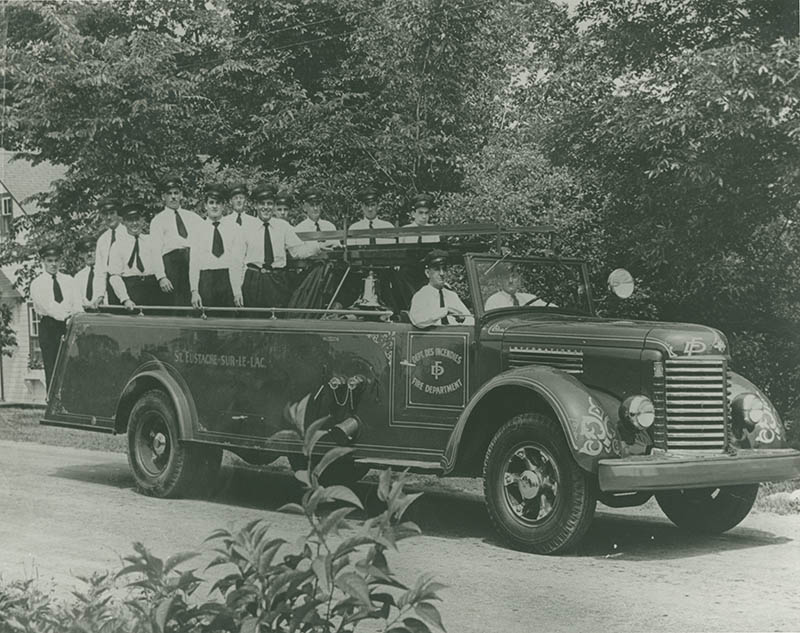
The new firefighters – seen here on parade in the late 1940s – were praised by residents for their efficiency and campaigns to promote fire prevention.
Hélène Lamarre Archive – Courtesy of the Société de généalogie et d’histoire de Saint-Eustache.
To ensure safety for residents, the village organized its own municipal fire brigade, headed by police chief J.-E. Beauchemin.
-
Deux-Montagnes Coat of Arms
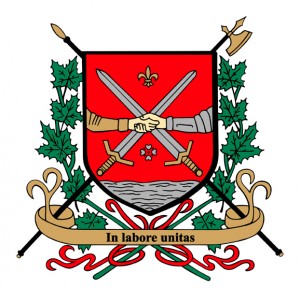
Like many other towns of its era, Saint-Eustache-sur-le-Lac obtained its own coat of arms, designed in 1956. For more details on their meaning : https://www.ville.deux-montagnes.qc.ca/identification-visuelle/
-
The City Saint-Eustache-sur-le-lac
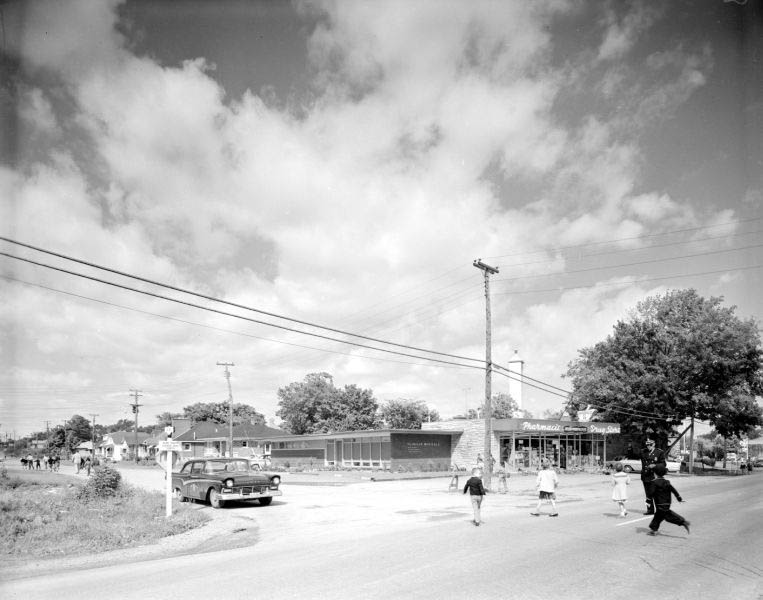
A view of Saint-Eustache-sur-le-Lac in 1958. Photo taken at the corner of 9e Avenue and Chemin d’Oka.
Bibliothèque et archives nationales du Québec E6,S7,SS1,D219630-219653
As a sign of its ongoing growth, Saint-Eustache-sur-le-Lac acquired city status in 1958. This administrative and legal upgrade gave the city council greater powers to manage the future direction of the municipality, especially with regard to its borrowing ability.
-
St-Agapit/Holy Family Church fire
April 12, 1961
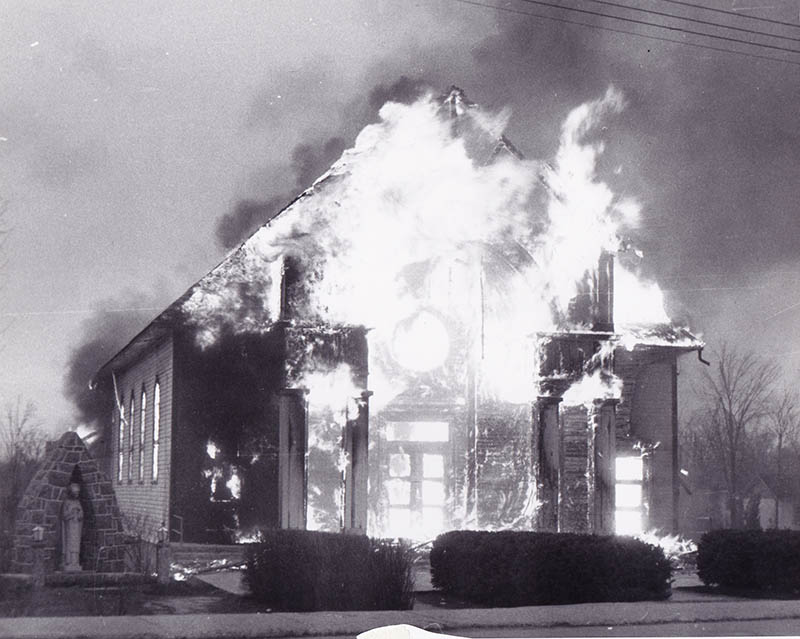
This image vividly illustrates the intensity of the blaze that gave firefighters no chance of saving the church. – Personal collection of John Brown
April 12, 1961 was a dark day in the history of Saint-Eustache-sur-le-Lac, as a massive fire destroyed Saint-Agapit Church, a vital centre for both its French-speaking congregation and English-speaking Catholics (who worshipped in the Holy Family Chapel annex). Newspaper accounts at the time reported that flames were first spotted around 4:30 pm by some of the 150 children attending afternoon mass. Fortunately, the children quickly escaped. Although one was injured, the blaze, reduced the church and chapel to ashes despite the courageous efforts of firefighters from several municipalities. Damage was estimated at $200,000.
-
New city status – and a new name
April 5, 1963
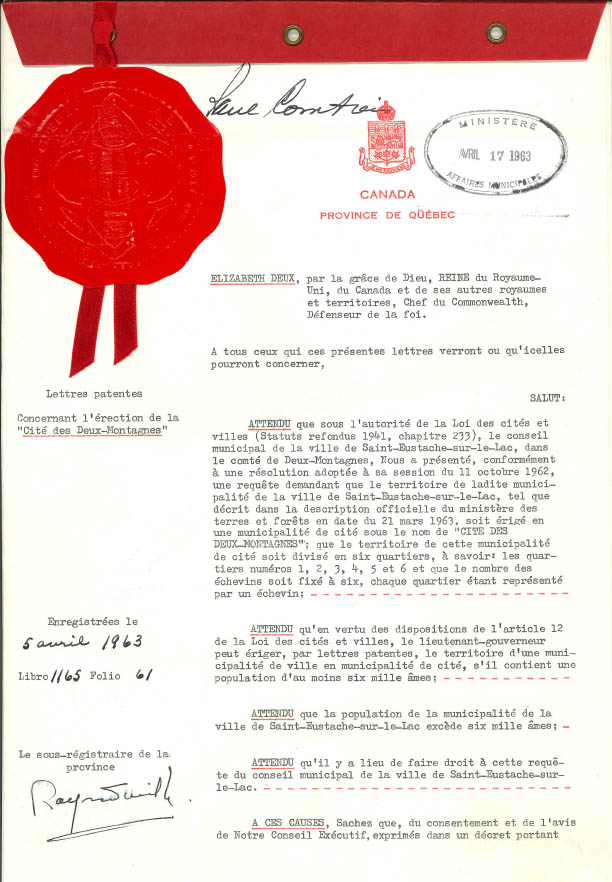
Letters patent dated April 5, 1963, confirming the change of name from “City of Saint-Eustache-sur-le-Lac” to “City of Deux-Montagnes.”
City of Deux-Montagnes Archives R101,101, Entry 3219.
On April 5, 1963, Saint-Eustache-sur-le-Lac received letters patent officially confirming the city’s new status as an urban municipality, to be known henceforth as the “City of Deux-Montagnes.” Renaming our city was the focus of a public debate that spanned several months. One resident group campaigned for the name “Grand Moulin.” In the end, however, “Deux-Montagnes” proved to be the right choice.
-
Municipal swimming pool opens
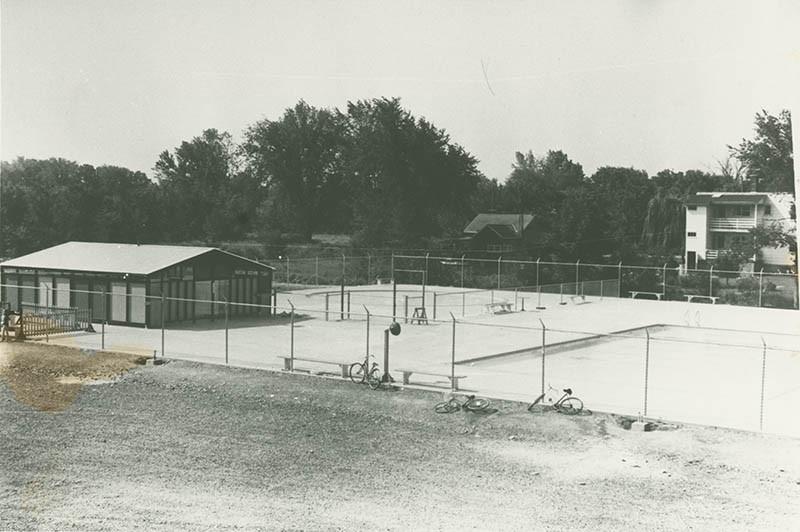
Hélène Lamarre Archive – Courtesy of the Société de généalogie et d’histoire de Saint-Eustache
Parc Central, inaugurated in 1964, is still a favourite attraction in Deux-Montagnes. Initial plans for the park were extremely ambitious, and even included a public beach. A series of planning decisions helped refocus the project, and the municipal swimming pool that was built instead has remained one of the coolest spots in town for kids of all ages.
-
New Community Centre
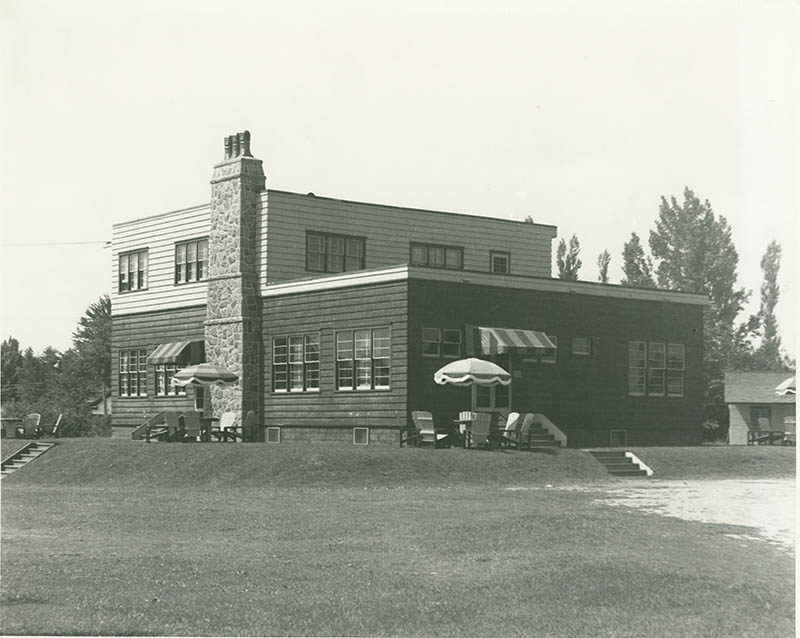
Hélène Lamarre Archive – Courtesy of the Société de généalogie et d’histoire de Saint-Eustache
Our new Community Centre opened its doors in 1978. Built on land that once housed the former golf course clubhouse, the centre replaced a building that was destroyed by fire eight years earlier. The new building also provided premises for the new Municipal Library, taken over by the city in same year.
-
From “Cité” to “Ville”
March 16, 1982
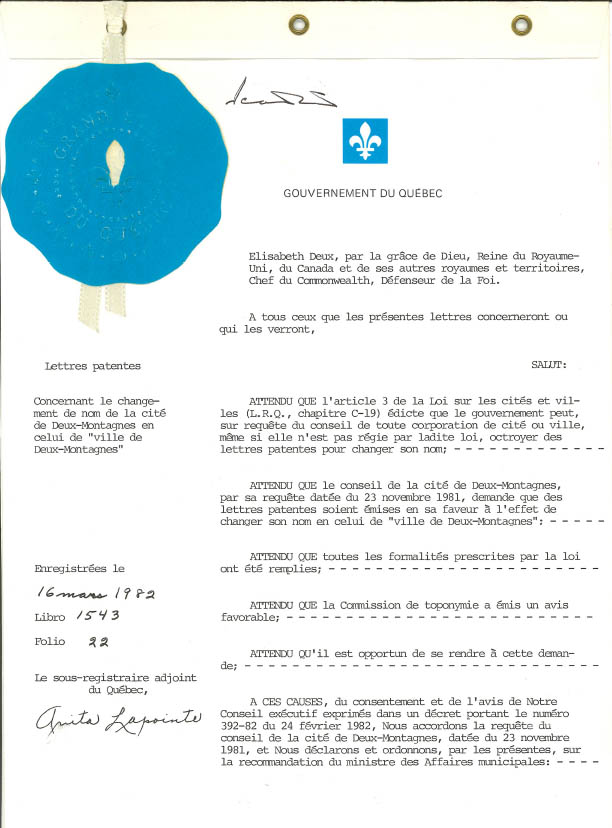
Letters patent dated March 16, 1982, respecting the change of name from “Cité de Deux-Montagnes” to “Ville de Deux-Montagnes.
City of Deux-Montagnes Archives, R101,101, Entry 8060.
On March 16, 1982, the City of Deux-Montagnes received letters patent from the Government of Quebec confirming the change of name (in French) from “Cité de Deux-Montagnes” to “Ville de Deux-Montagnes.
-
Deux-Montagnes celebrates its 75th Anniversary

The Deux-Montagnes 75th Anniversary logo.
City of Deux-Montagnes
A gala, a special exhibition, a golf tournament, and a host of other activities were organized for the Deux-Montagnes 75th Anniversary celebrations.
-
Deux-Montagnes Centennial
August 18, 2021
 Proud of their city’s past, local residents are celebrating the Deux-Montagnes 100th Anniversary by learning more about its history.
Proud of their city’s past, local residents are celebrating the Deux-Montagnes 100th Anniversary by learning more about its history.
